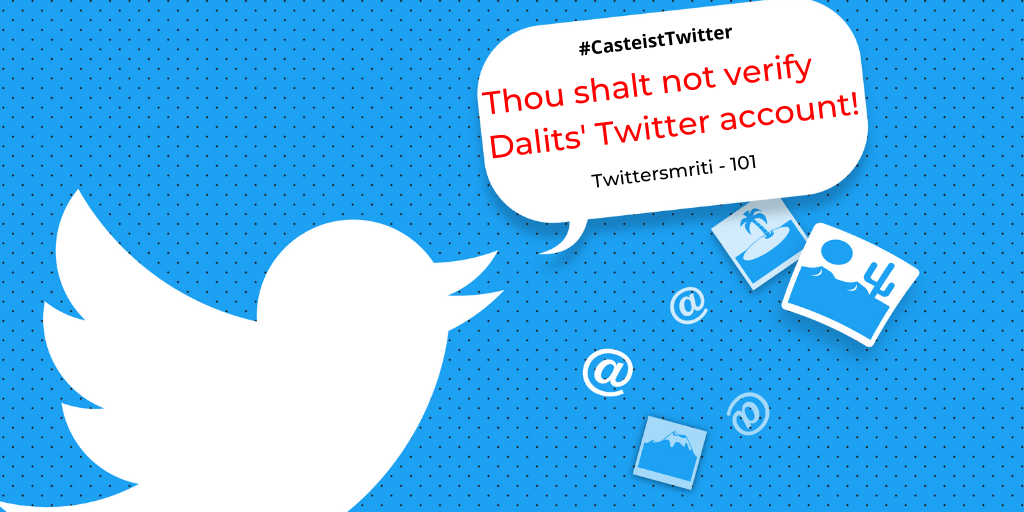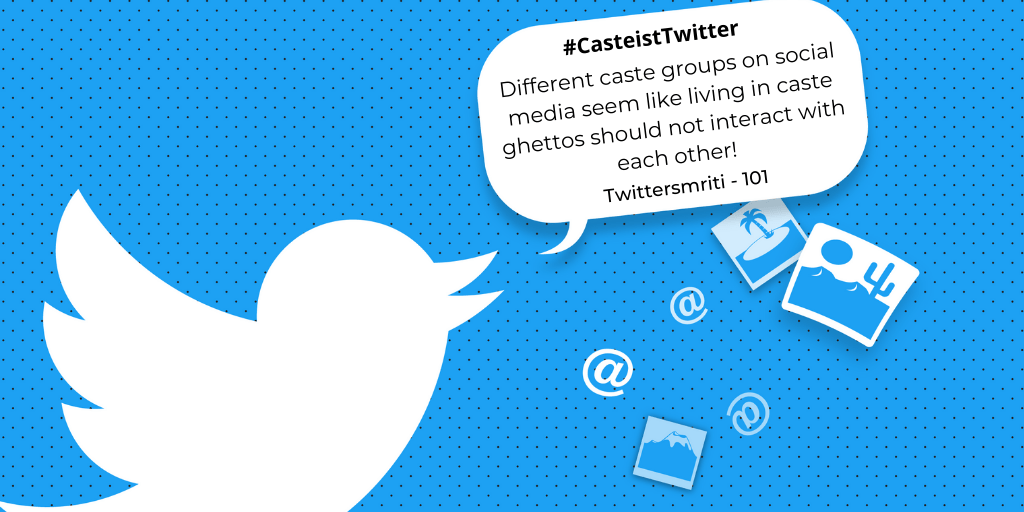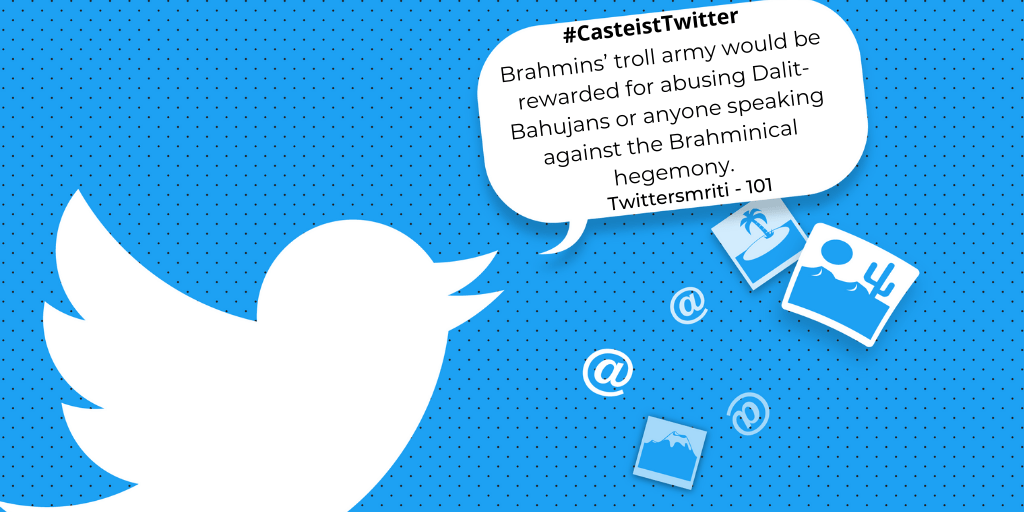
Why #CasteistTwitter Shouldn’t Surprise You
Today (November 2, 2019) #CasteistTwitter and #SackManishMaheshwari were trending on Twitter after the account of social activist Dilip Mandal was blocked by Twitter but it shouldn’t surprise anyone that social media are casteist to its core in India.
When internet and social media emerged in India at the beginning of this century, many Dalits including me saw it as an opportunity to connect with the like-minded activists. From MySpace to Orkut and Facebook to Twitter, Dalit movement has been present on all social platforms in one form or another and I have been part of it on all these platforms. During this period, many authors have written various articles about the ‘Digital Dalits’ and how Dalits are using social media to raise awareness and fight caste discrimination, and everything is ‘goody goody’ but almost none has written what it costs social media Dalit activists while trying to find space on social media platforms. Sure, other activists or influencers also face various forms of pressure or stress but for Dalits activists, there is an added ‘flavor’ to that, which come with the position of Dalits in the caste hierarchy.
These are not some random incidents of hate against the Dalit community but are the day to day comments and posts against Dalits. Indian social media is full of anti-Dalit, anti-minority comments and reasons are many. Social media though considered democratic is not democratic at all and is dominated by certain class and caste of people, who set the narrative.
Social media, which was supposed to be ‘social’, isn’t social at all.
Social media and internet have lowered the entry barriers and it is widely believed that access to the Internet and social media has given opportunities and have opened many doors for marginalized communities around the world to express themselves but is it true?
For one Dalit speaking online, hundreds of others are silenced with abuse or threats.
There is hardly any interaction among different caste groups on social media and dominant castes in real life also control and set the agenda on social media. It could be simply because very few Dalits are using social media to fight caste discrimination or very few are speaking against injustice on social media and hence Dalit voices are easily suppressed.

The caste oppression, threats and abuse that Dalits face in real life follow on social media as well. There is no social media platform from which my posts have not been removed or I have not been restricted to post anti-caste stuff and I am not the only Dalit who has faced restrictions to post. On the other hand, those who use casteist or abusive comments and issue threats online have never been punished or their posts have never been deleted even when Dalits report those.
On social media not only anti-reservation posts are widespread but derogatory reference to caste-based occupations are also main forms of hatred toward Dalits. There has not been any research or study on casteist abuse on Twitter as such but in my personal experience, it is maybe worse than as it on Facebook, because there are very few Dalits on Twitter.
Representation of Dalit in media as well as in other institutions is marginal, which adds even further pressure on Dalits to use social media as effectively as they can to raise their concerns. Dalits are selectively excluded from the public sphere and discourse and only time they are mentioned where there is any wrongdoing. By including or excluding certain groups from its representation of society, it defines who belongs to ‘us’ and who belongs to ‘the others’. First to be blamed for any crime in the society and last to be trusted has become the norm for Dalit in India and media plays an important role in shaping such an image. By showing only the poverty and Dalit living and working in slums, mainstream media loves weak and meek disadvantaged groups and shy away from assertive and well educated among disadvantaged groups.

Who produces the content for the mass consumption plays an important role and as Dalit are not represented in decision making positions in media, hence marginalization and portraying the distorted image of Dalit has become common in mass media and trend follows on social media as well.
Final Words – Go Write, Write in Anger
Why it is so that medium which was supposed to be democratic and is projected as the gateway to democratic voices has been shut down to Dalits either by excessive regulations or lack of access or opportunities to speak out?
Social media which was supposed to contribute toward bringing people closer in the form of social groups and increased engagement, it has mostly nourished uncritical and breed hatred among different communities in India. Social media in India maybe has empowered undemocratic and casteist bigots more than anyone else hence the rise of right-wing political parties.
Several psychologists and theorists have attempted to explain the connection between social media use and the rise of racist and hateful behaviour. They argue that “the deliberate design of social media websites, which uses algorithms to conform to users’ currently held thoughts and beliefs, creates polarization and bias among users, pushing them towards preexisting views.” So, there is little to no hope that using social media can bridge the gaps between different caste communities in India rather the divide is increasing with misinformation, lies and manipulation that goes on social media every day.
Dalits’ fight is against how fast “others” can appropriate and how fast we can reproduce “our history” with Dalit pens. Erasure of “our history” that goes on a daily basis on social media along with threats and abuse can only be stopped by rewriting it from our own perspective. Powerful forces with money and resources, on the other hand, it becomes a stressful and frustrating job for Dalits to “mess with” those in power.

Indeed, it’s a challenge for multinational social media platforms such as Twitter and Facebook that caste specific bullying and comments are monitored, and pro-active actions are taken against such hatred. Each digital media play into the hands of power, human rights are least of their concerns. With the rise in mistrust in mainstream media and most news consumption from social media, Social media has the power to challenge the hegemony of certain caste groups on media but to silence and stop Dalits from using it another betrayal from the ruling castes.
So, it should not surprise anyone when Twitter or any other social media gags our voices but surely we will fight against those!
I want to end with a quote from Anne Lamott, the American novelist,
“Tell your stories. If people wanted you to write warmly about them, they should have behaved better.”
Go write, write in anger and break the chains of caste slavery!
Author – Pardeep Attri



+ There are no comments
Add yours